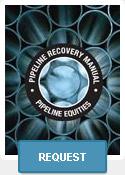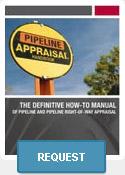Pipeline Equities
PO Box 571977
Houston, Texas 77257
Phone: 713-623-0690
Pipeline Recovery
excavation & removal
Damage Assessment
of easements
Pipeline Appraisal
pipeline property valuation
Pipeline Equities
PO Box 571977
Houston, Texas 77257
Phone: 713-623-0690
excavation & removal
of easements
pipeline property valuation
With oilfield growth often comes economic expansion and building of commercial centers and new residential areas. Real estate developers are discovering abandoned and unknown “alien” pipelines on their properties at an increasing rate. In some cases, you can find the alien pipeline documented in state or federal regulatory reports or local courthouse title searches. Oftentimes, however, they do not exist as far as public records.
The discovery of alien pipelines happens mostly at the onset of infrastructure installation (streets, water, sewage, and utilities)for new residential or commercial projects.Existing pipelines have been flagged and identified by their owners, and the developer is ready to proceed with excavation of these lines. When the alien pipeline is discovered, work comes to a halt. The alien line seems to come from nowhere and seems to go nowhere, but it does cross the subject property for a few hundred or maybe a few thousand linear feet. Nothing else is known. No one claims the pipeline, and the label “abandoned pipeline” is quickly applied. Most developers think that because a pipeline is abandoned, then they can proceed with excavation. In everyday terms, “abandoned” means to have walked away from, but to a pipeline owner or regulator, the term only means the operator/owner is not using it at the time. The ownership remains intact; therefore, before excavating an abandoned pipeline, every effort must be made to determine ownership. Proceeding without doing so could be a violation of an easement agreement or risking trespass on someone else’s property. Additionally, for the safety of the excavation crew, every effort must be made to determine what was transported in the abandoned pipeline. Removal of an abandoned pipeline could risk the health safety of the excavation crew.
Common Problems with Alien Pipelines
1.) Lease lines. These are often small diameter gathering pipelines and not dedicated lines that would require a documented easement or corridor designation that would justify a recorded easement and contract. Most gathering lines or lease lines are laid from well to tank, tank to trunk line, well to line, etc. These lines are temporary in nature, and sometimes even laid on the surface for the purpose at hand. If situated on the same lease as dedicated lines, lease lines do not require a dedicated easement to be officially documented. Additionally, if all lines are on the same lease, no record is required in most oilfield states. This makes tracking down the owner and determining the type of line almost impossible.
2.)Asbestos Coating.Vintage lines laid prior to 1980 have varying amounts of asbestos (usually Chrysotile) fibers embedded the exterior coating. This protective coating insulated the underground pipe. The asbestos fibers are stable and non-hazardous as long as they remain non-friable(bonded) and buried. The asbestos only becomes friable when it has either disintegrated or has become dry and soft enough that it can be crushed into powder form with only normal hand pressure.
Whatever the state of the asbestos coating, licensed and certified contractors are required to be onsite to supervise the take-up (removal) asbestos-coated pipelines.Generally, the normal take-up procedure usually requires that the pipe to be cut at some point. The abrasion of the cut increases the possibility of friable asbestos becoming a potential issue. This is why the EPA and OSHA require licensed and certified contractor and on-site supervisors.
3.) Residue.There is always the possibility of product residue in these lines. Cuts or taps into the line can determine the presence of residue of oil and gas products such ascrude, water, air, and nitrogen. Exposure of product residue and its flammability need to be considered when removing the pipeline. We have found flammable residue in 25% percent of all of the approximately 20 million feet of pipelines we have removed in the past 31 years (1986-2017).
4.)Ownership.There is limited to no knowledge of the owner (current or past) of the pipeline in question, thus the alien status. Aside from determining lease or gathering lines from crude or gas transmission lines, there have been large numbers of mergers of oil and gas companies, pipeline companies, and bankruptcies or just businesses going defunct and closing down over the past few years. Many non-performing or unobtrusive underused pipelines can be forgotten if uneconomic, not to mention the pirating of a line by another operator who needs a portion of the pipe for their own transport needs. We really don’t know what is going on beneath the surface with pipelines a lot of the time.
How to Safely Remove Alien Pipelines
We get plenty of calls from the Houston area and occasionally calls from Michigan, Pennsylvania, Oklahoma, and California as well seeking help in identifying alien and abandoned pipelines. However, many developers just call a construction company or use the one they already have on-site to remove the alien pipeline. These workers are all at risk from possible fire, toxic release, and hazardous waste exposure. It is important to immediately call an environmental specialist or consultant to check and inspect any alien pipeline discovered on a property. I know of no standard dirt or street contractors that could determine the type of coating on petroleum pipelines for possible asbestos exposure.
If you as a contractor or your subcontractor uncovers a strange or alien pipeline, follow the following steps to ensure that you can remove the line safely.
David Howell leads Pipeline Equities in pipeline removals and acquisitions in Oklahoma, Louisiana, Texas New Mexico, and California.

Residential infrastructure in place over 1940’s vintage oil field with the underlying presence of undocumented lease and gathering lines.

Path of removed 4 ½” OD gathering line

Sewage and water lines being installed uncovers undocumented line.

Trained operator attempts to determine pressure or residue in gathering line.

Ultimate precautions are taken to ensure no releases or fires result from discovery.

Surrounding infrastructure is completed while waiting for alien lines to be removed in other parts of the development.

Fill out the short form below to receive our Pipeline Recovery Manual.
Sign up for our free newsletter to receive your complimentary copy of our Pipeline Recovery Manual that explains our entire process for recovering or salvaging idled or abandoned pipelines.
You will see how we deal with landowners regarding notification and recordings. How to draft a contract of sale with models by: Exxon, Texaco, Koch and others and pictures showing actual work in process.
The manual shows Pipeline Equities job references, right of way releases, agreements and the history and background of Pipeline Equities and managing partner David Howell. These references touch on parts of the six million feet of line removed or handled by the company over the past twenty years.
A line pipe table describing various weights, grades, and pressure ratings of ERW and seamless line pipe is included. This section is an indispensable tool for anyone doing operational word with line pipe.
Also included are extensive glossaries of pipe, pipeline, and right of way terms.

Request a complimentary Pipeline Appraisal Handbook
Fill out this short form and you will be sent a confirmation link to our Newsletter. Once you click the link you will be subscribed to our newsletter and taken to a page where you can download the Pipeline Appraisal Handbook.
This handbook written by David Howell, managing partner of Pipeline Equities is the basic text of any pipeline valuation. All of the essential factors for establishing the value of a pipeline are discussed along with exclusive proprietary formulas and tables essential to a certified appraisal.
Also included are 32 pages of pipe weight and grades tables that cover virtually any situation which might be encountered regarding line pipe requirements. Additionally you’ll find an extensive glossary of pipe, pipeline and right of way terminology is part of the Handbook.
Subjects include: Replacement, Right of Way, Surface Inventory, Throughput, Salvage/Recovery, and comparable sales histories to name a few of the basic factors of pipeline appraisal.
The author recognized a need for a report or “how to” manual for properly appraising pipelines and pipeline right of ways. Currently the work is being done by accounting firms, engineers, and real estate appraisers.
Howell has forty-five years experience in many sectors of the petroleum industry from drilling contractor and oil and gas operator to pipe and supply distribution throughout the world. He has published Tradex Equipment magazine, the Whole World Oil Directory, and the Texas Oil Register.
For the past twenty years, Howell has been almost exclusively engaged in pipeline sales and acquisition, appraisal, removal for salvage, environmental remediation and general pipeline operations.
Howell currently serves on board of the Pipeline Appraisal Institute and is a member of the International Right of Way Association. Howell is a graduate of Texas A&M University – Kingsville and a native of Alice, Texas. He is currently residing in Houston and is the managing partner of Pipeline Equities.